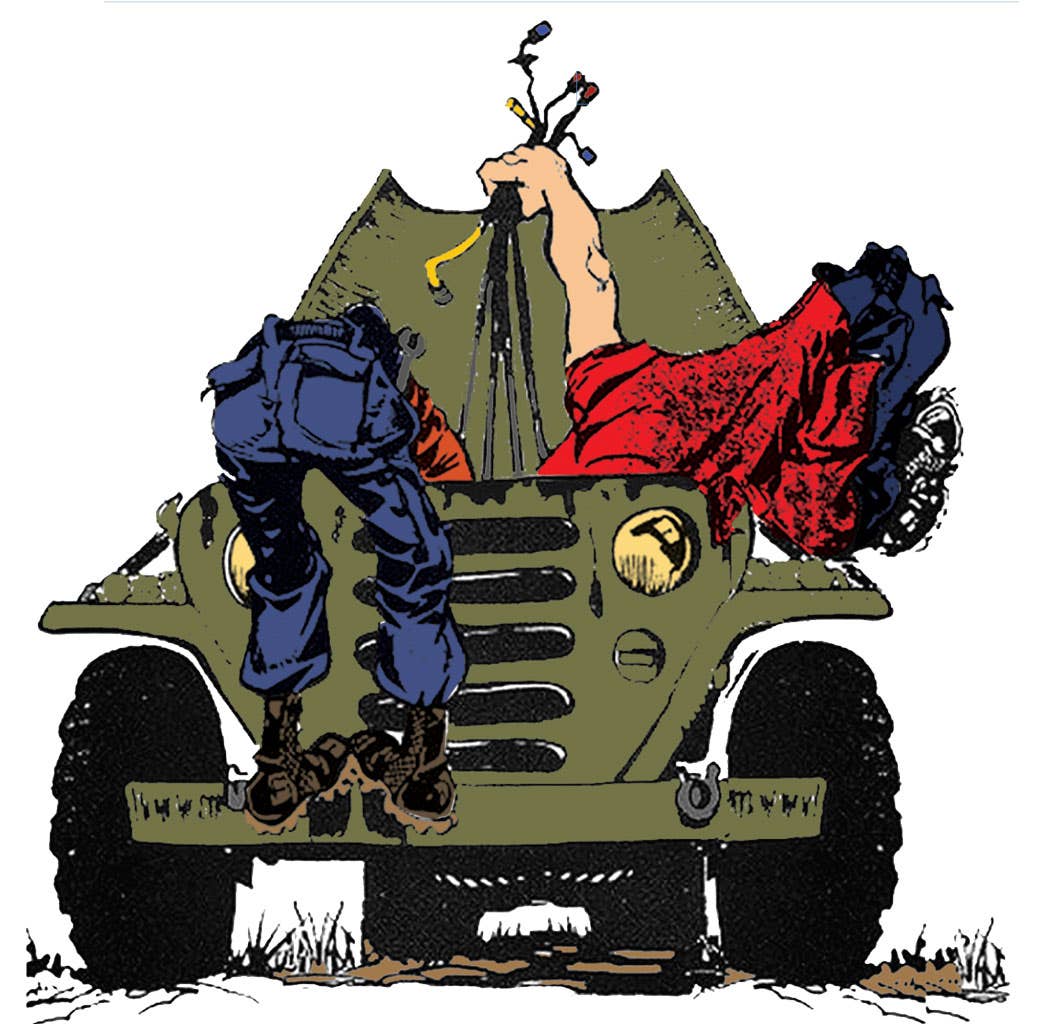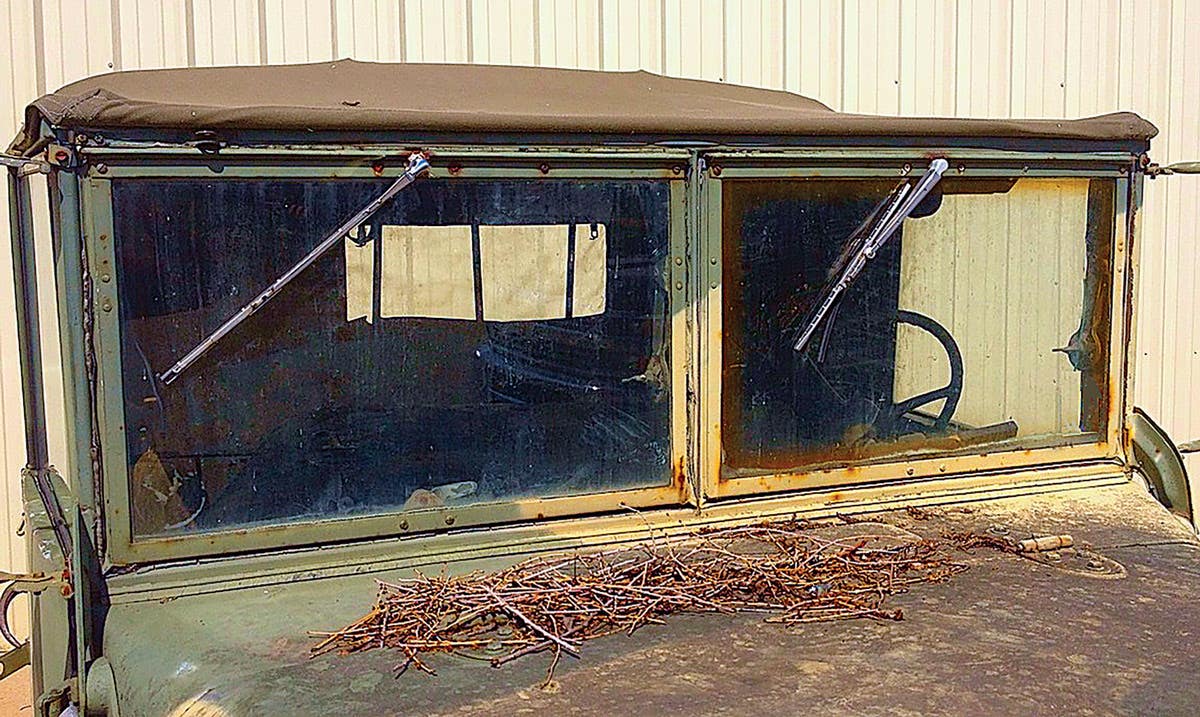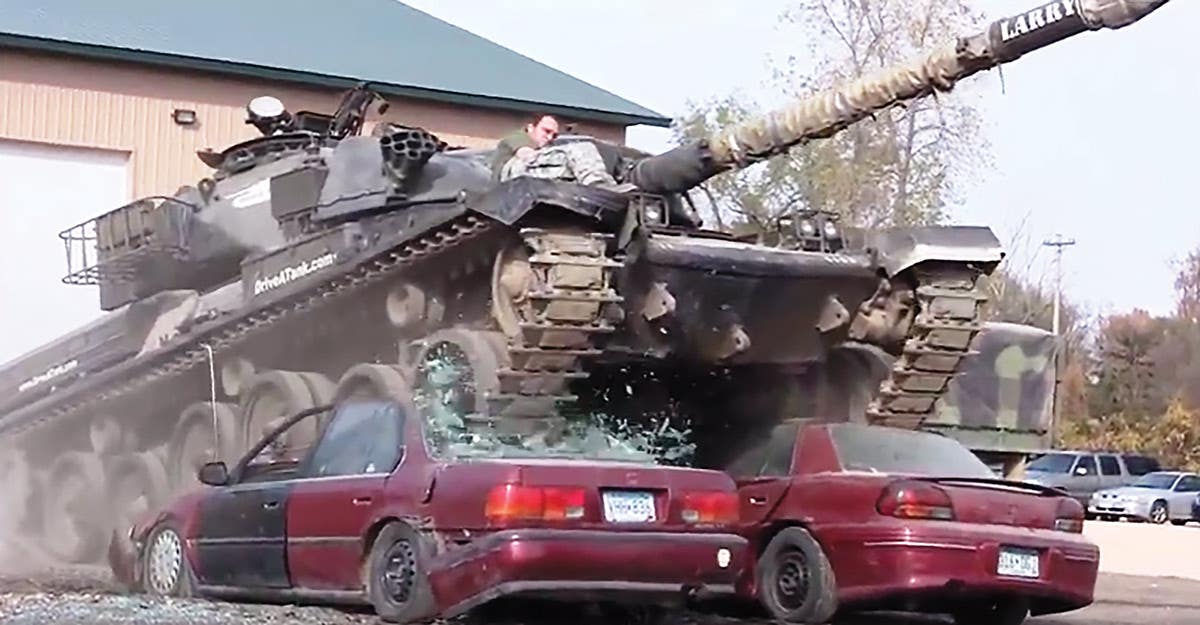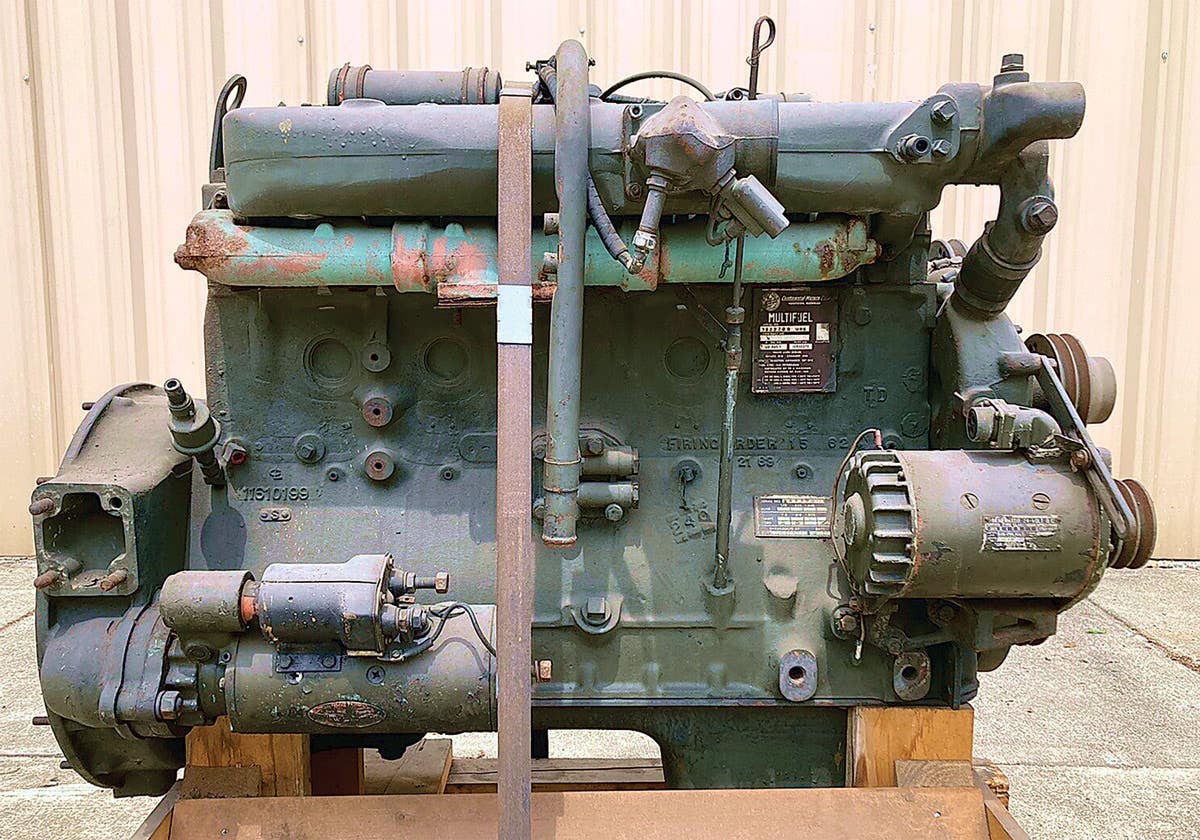Operation Blizzard
The first event, “Operation Blizzard,” was held in 2004. It was a smashing success. Members set up their camp and drove their M29 Weasels and a Haaglund BV-206 to the base of Ski Cooper. There, they set up a display of equipment used by the 10th Mountain Division and, of course, some attempted to try the slopes on original WWII skis! However, that tradition may be coming to an end.
Many of the members of the Military Vehicle Collectors of Colorado (MVCC) have an interest in history as well as collecting, restoring and preserving military vehicles. WWII presents many of us with a wide variety of possible vehicles to add to our wish lists as well as a tremendous amount of history and/or information
Members of the Military Vehicle Collectors of Colorado (MVCC) return to the site of Camp Hale each winter for a little fun in the snow.
The 10th Mountain Division was activated at Camp Hale, Colorado on July 15, 1943, with the purpose of training soldiers to fight in a winter (cold weather) or mountain theatre of operations. Although the 10th was one of the last divisions to see combat and was in action for less than six months, it distinguished itself in combat during the war. After the war, members of the 10th went on to significantly influence the growth and popularity of the American ski industry. Aspen, Vail, Sugarbush, Crystal Mountain, and Whiteface Mountain are but a few of the ski resorts built by 10th Mountain veterans. Five years ago MVCC members created "Operation Blizzard," an event that gives enthusiasts the opportunity to drive and display vehicles, play in the snow, and honor the veterans from the 10th Mountain Division.
10TH MOUNTAIN AND CAMP HALE
Following WWI, many began to wonder if the US Army was prepared to fight in winter conditions. Some suggested that the US Army train its own ski troops. The development of a specialized unit began before the United States entered the war. In 1940, the Army began to consider what preparations had been given to special clothing, equipment, food, transportation and other requirements to field, maintain and support armed forces under conditions such as those in the Finnish and Russian campaigns. In May 1940, the War Department began working with the American Alpine Club and the National Ski Patrol to develop specialized clothing and equipment for winter and mountain warfare. In July 1940, Charles Minot Dole, Chairman of the National Ski Patrol, wrote President Roosevelt and offered to recruit skiers for the army and to help train troops in ski patrol work. He stated, "It is more reasonable to make soldiers out of skiers than skiers out of soldiers." In November 1940, the War Department issued a directive forming ski patrol units within the 1st, 3rd, 5th, 6th, 41st and 44th Divisions.
Men from the 10th Mountain Division in front of the Hotel Jerome in Aspen, Colorado, ca. 1942.
In early 1941, the War Department formalized the role of the National Ski Association as an advisor to the Army. In April, the Army began a search for a site suitable of housing a division of 15,000 men and conducting year-round mountain training. Various locations were considered, but the site had to meet several requirements. The Army activated the 1st Battalion, 87th Mountain Infantry Regiment at Ft. Lewis, Washington, to begin mountain warfare training in November 1941. The War Department revised its contract with the National Ski Patrol in late 1941 and instructed them to recruit civilian volunteers for the Army. Prospective volunteers were asked to provide letters of recommendation attesting to their skills in skiing or mountaineering - the only time in our nation's history that a civilian sports organization recruited, screened, and approved volunteers for military service. Within weeks after the United States was plunged into war, and it quickly becomes apparent that U.S. troops would be fighting around the world in a variety of climates and in all types of weather.
The training of all ground troops came under the command of Lt. General McNair when the War Dept. was reorganized in March 1942. Various plans were made to expand mountain training, but had to be abandoned due to shortages of men and equipment. The Army activated a mountain division in 1942 and construction of Camp Hale began in April near Pando, Colorado. The camp was located in central Colorado and was named for General Irving Hale, the chief of the Colorado National Guard. Prior to construction of Camp Hale, Pando was a small, two-room railroad stop in the middle of the Colorado Rockies.
The camp was constructed in Eagle Park, east of Highway 24 between Leadville and Red Cliff, Colorado. Camp Hale was just down the road from Tennessee Pass, 12 miles from Leadville, CO. The site was located on a large, flat valley bottom, surrounded by steep hillsides which were ideal for training in skiing, rock climbing, and cold weather survival skills. The area around Pando had consistent and heavy snowfall throughout the winter and was located adjacent to national forest areas. The camp varied between 5,000 and 247,200 acres during the time it was an active military installation.
Weasels and BV206s are common vehicles at the annual "Operation Blizzard."
On June 7, 1942, the Alaskan islands of Attu and Kiska were invaded by the Japanese as part of the Midway invasion. The enemy occupation rattled the nation and made Alaskan and the Pacific Northwest residents very uneasy.
The 10,000 Japanese holding the islands had to be removed by force but, unfortunately, the US Army did not have the troops nor equipment to enforce this policy.
The U.S. entry into the war and the Japanese invasion gave new urgency to train and equip troops specializing in cold-weather and mountain warfare. Within months, two additional battalions were activated at Camp Hale and attached to the 87th Regiment. By the end of the war, two other regiments (the 86th and 85th) were also activated and trained at Camp Hale. Numerous other units also receive training in mountain warfare at Camp Hale, including artillery, engineering, signal, communications and other specialized units. The 85th, 86th and 87th Mountain Infantry Regiments were eventually organized as the 10th Light Infantry Division (Alpine)--the only such division in the entire U.S. Army.
The unit was renamed the 10th Mountain Division in 1944. The 10th Mountain Division saw action in Italy and was employed to help the 5th Army's IV Corps break the German hold on the Gothic Line in 1945. The battles for Riva Ridge and Mt. Belvedere, and later the eventual breakout from the Po Valley, are among the 10th's distinguished accomplishments during the war.
POSTWAR HISTORY
The 10th Mountain Division was disbanded in November 1945, following the end of hostilities. The unit was reactivated as a training division in 1948 and trained over 120,000 men between 1948 and 1953. In January 1954, the unit designation was again changed creating the 10th Infantry Division.
Camp Hale was in continuous use between 1943 and 1964. Following WWII, the camp served as a base for cold weather, survival and mountain training. Gradually, it fell into disuse, thought it continued to serve as a base to train operatives for the CIA. From 1958 to 1963, the camp was used to train Tibetan nationals who were then returned to their country to lead a guerilla insurgency.
The camp was closed in 1964 and completely demolished. Only the foundations and the concrete block houses remain. The camp again made headlines when it was declared a Federal disaster area in the 1970s. Since then, the unspent ordnance has been removed and the site has been cleaned. Camp Hale is now part of the National Parks System and is maintained by US Forest Service. A variety of military units use Camp Hale to conduct cold weather survival and mountain warfare training once again..
POSTWAR LEGACY OF THE 10th
Most of those who served in the 10th Mountain Division during WWII remained faithful outdoors enthusiasts. Many continued their love of skiing long after serving their country. Few people are aware that at one time or another every single major ski area in the U.S. was operated by a former member of the 10th Mountain Division.
The town of Vail, Colorado, is located just a few miles from Camp Hale. Three former members of the 10th, Pete Seibert, Sarge Brown, and Bob Parker, had a vision of making Vail into a ski resort like the ones they had seen while overseas in Italy. Today, Vail is one of the largest ski resorts in the country and enjoys a well-deserved reputation all over the world. There is a large bronze statue of a lone skier dedicated to the members of the 10th Mountain Division located in Vail near the clock tower.
THE MVCC AND THE 10TH
The MVCC has several members of who became interested in the history of the 10th Mountain Division long before they began collecting military vehicles. This is quite common if you have lived in Colorado long enough. Several MVCC members are also historians, collectors or re-enactors. The MVCC has had a long relationship with members of the 10th Mountain Division Living History Group. In 2004, MVCC members lent MVs to film a PBS documentary on the 10th featuring members of the 10th Mountain Division Living History Group as actors and commentators.
Several years ago, the MVCC learned that the 10th Mountain Division Association (veterans of the 10th) held an annual reunion every February on the slopes of Ski Cooper (ski area on Tennessee Pass where members of the 10th were taught to ski). In 2003, the MVCC decided to hold an event to commemorate members of the 10th and thank them for their service.
The first event, "Operation Blizzard," was held in 2004. It was a smashing success. Members set up their camp and drove their M29 Weasels and a Haaglund BV-206 to the base of Ski Cooper. There, they set up a display of equipment used by the 10th Mountain Division and, of course, some attempted to try the slopes on original WWII skis!
After skiing most of the morning, members lunched with veterans of the 10th. They were as happy to see the MVCC members as we were to spend time with them. Many of the 80+ years old veterans were still able to ski. Since many of the vets had never ridden in a Weasel during their service, club members offered rides.
Following lunch, everyone participated in a memorial service in which the veterans honor those who have fallen (both past and present) by reading their names out loud. Over the next two days the club members drove their weasels on the various trails all over Camp Hale.
Many "flat-landers" believe that Colorado experiences a great deal of snow storms. Though it does receive its share, the weather at Camp Hale has been excellent with only an occasional snow flurry during previous Operation Blizzard events. Although night-time temps at Camp Hale fall to as low as -20?F, mornings are brisk and days are usually sunny and clear with temps in the 30? - 40?F range. The good news is that the snow is plentiful.
Sadly, last year was the last year that the veterans of the 10th held a reunion - they are getting too few in number and too old to make the trip to the top of Tennessee pass. To honor them, the MVCC continues this tradition and will again be holding Operation Blizzard on February 21-23, 2007. For more information on the MVCC and Operation Blizzard, visit the group's Web site at www.mvcconline.org.







